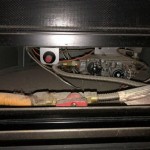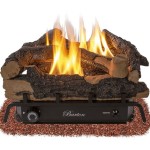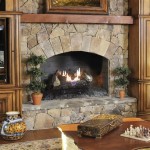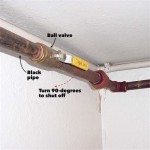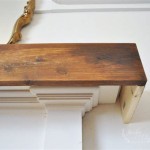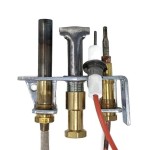Fireplace Crown Molding: An Elegant Finishing Touch
Fireplace crown molding offers an exquisite and often overlooked opportunity to enhance the aesthetic appeal of a fireplace. More than just a decorative element, it bridges the gap between the fireplace structure and the surrounding wall or ceiling, creating a seamless and polished look. The addition of crown molding can elevate the entire room, transforming a simple fireplace into a sophisticated focal point.
Crown molding, traditionally used at the intersection of walls and ceilings, brings a sense of formality and architectural detail. When applied to a fireplace, it can define the space, accentuate the fireplace's design, and even increase the perceived value of the home. The selection of the appropriate style, material, and installation method are crucial for achieving the desired effect. Different styles, from simple and modern to ornate and traditional, complement various architectural designs and personal preferences.
The decision to incorporate fireplace crown molding hinges on several factors, including the existing design of the fireplace, the overall style of the room, and the desired level of formality. Careful consideration of these elements ensures that the crown molding integrates seamlessly and enhances the space. The following sections delve into the key aspects of selecting and implementing fireplace crown molding.
Material Selection for Fireplace Crown Molding
The choice of material significantly impacts the appearance, durability, and suitability of fireplace crown molding. Common materials include wood, polyurethane, and medium-density fiberboard (MDF). Each material offers distinct advantages and disadvantages.
Wood, particularly hardwoods like oak, maple, and cherry, provides a classic and timeless aesthetic. Wood crown molding can be stained or painted to match existing trim or to create a contrasting accent. Its natural grain and warmth add character and richness to the fireplace. However, wood is susceptible to moisture damage and can expand and contract with temperature fluctuations, potentially leading to cracks or warping. Wood crown molding also tends to be more expensive than other options.
Polyurethane crown molding is a synthetic alternative that offers several benefits. It is impervious to moisture, making it ideal for areas with high humidity or potential water exposure. Polyurethane is also lightweight, easy to cut and install, and resistant to insects. It can be painted to achieve the desired color and finish. While polyurethane can mimic the appearance of wood, it lacks the natural grain and warmth of real wood. It is generally a more cost-effective option than wood.
MDF crown molding is an engineered wood product made from wood fibers bonded together with resin. It is a stable and consistent material that is less prone to warping or cracking than solid wood. MDF provides a smooth surface that is ideal for painting. It is also a relatively inexpensive option. However, MDF is susceptible to water damage and should not be used in areas with high humidity or potential water exposure. It also lacks the natural character of solid wood.
Consideration should be given to the material’s fire resistance. Certain materials, or coatings, can add a layer of protection if the fireplace is wood burning. Consult local building codes for compliance.
Style and Design Considerations
The style and design of the crown molding should complement the overall aesthetic of the room and the specific design of the fireplace. A wide range of styles are available, from simple and modern to ornate and traditional. The choice of style should reflect the desired level of formality and the architectural details of the surrounding space.
For modern and minimalist spaces, simple crown molding with clean lines and minimal ornamentation is often the best choice. These styles create a subtle and understated elegance that complements the clean aesthetic. Painted in a neutral color, modern crown molding blends seamlessly with the surrounding walls, providing a refined and polished look.
Traditional homes often benefit from more ornate crown molding with intricate details and decorative carvings. These styles add a sense of grandeur and formality to the space. Rich wood finishes or painted details enhance the traditional aesthetic. Consider adding a keystone to the crown molding above the fireplace opening for a more pronounced focal point.
The size and scale of the crown molding should also be proportional to the size of the fireplace and the room. Overly large crown molding can overwhelm a small fireplace, while too-small crown molding can appear insignificant in a large room. A mock-up of the crown molding can assist in visualizing the scale and proportion prior to installation.
Installation Techniques for Fireplace Crown Molding
Proper installation is crucial for achieving a professional and aesthetically pleasing result. Careful planning, precise cutting, and secure attachment are essential for a successful installation.
Before beginning the installation, measure the perimeter of the fireplace mantel accurately. Use these measurements to calculate the amount of crown molding needed, adding extra for waste. Accurately cut the crown molding using a miter saw, ensuring precise angles for corners and joints. A coping saw can also be used for intricate cuts. Ensure that the cuts are clean and smooth for a seamless fit.
Attach the crown molding to the fireplace mantel using construction adhesive and finishing nails. Apply the adhesive to the back of the crown molding and press it firmly against the mantel. Use finishing nails to secure the molding in place while the adhesive dries. Ensure that the nails are countersunk and filled with wood filler or caulk for a smooth finish.
For a more professional look, caulk the seams and gaps between the crown molding and the mantel. This creates a seamless transition and prevents air leakage. Use a paintable caulk that matches the color of the crown molding. Smooth the caulk with a wet finger or a damp cloth for a clean and uniform finish.
If painting or staining the crown molding, apply a primer coat before applying the final finish. This helps to seal the wood or polyurethane and provides a better surface for the paint or stain to adhere to. Apply multiple coats of paint or stain for a durable and long-lasting finish. Allow each coat to dry completely before applying the next.

Result For Stone Fireplace With Crown Molding Home Indoor Design

Fireplace Painted Mantel Bead Board Facing With Crown Molding And Corbels Summit Beadboard Design We Are A 5 Star Rated Er

Crown Molding Ideas 10 Ways To Reinvent Any Room Bob Vila

Adding Visual Interest And Height To Your Fireplace Remodelando La Casa

Fireplace Mantels Molding Remodel Simple

Fireplaces Stone Fireplace With Suspended Mantel Game Boards Crown Molding Stock Photo And Rights Managed Pic Shl Ljw1 2994 406 Agefotostock

6 Crown Molding Buildup Around Brick Fireplace The Joy Of Moldings

Fireplace Update

Diy Mantel Update With Crown Molding Table And Hearth

Fireplace Mantel Handmade Snake River Model With Dark Walnut Stain Dental Crown Molding We Do Rush Orders
Related Posts

